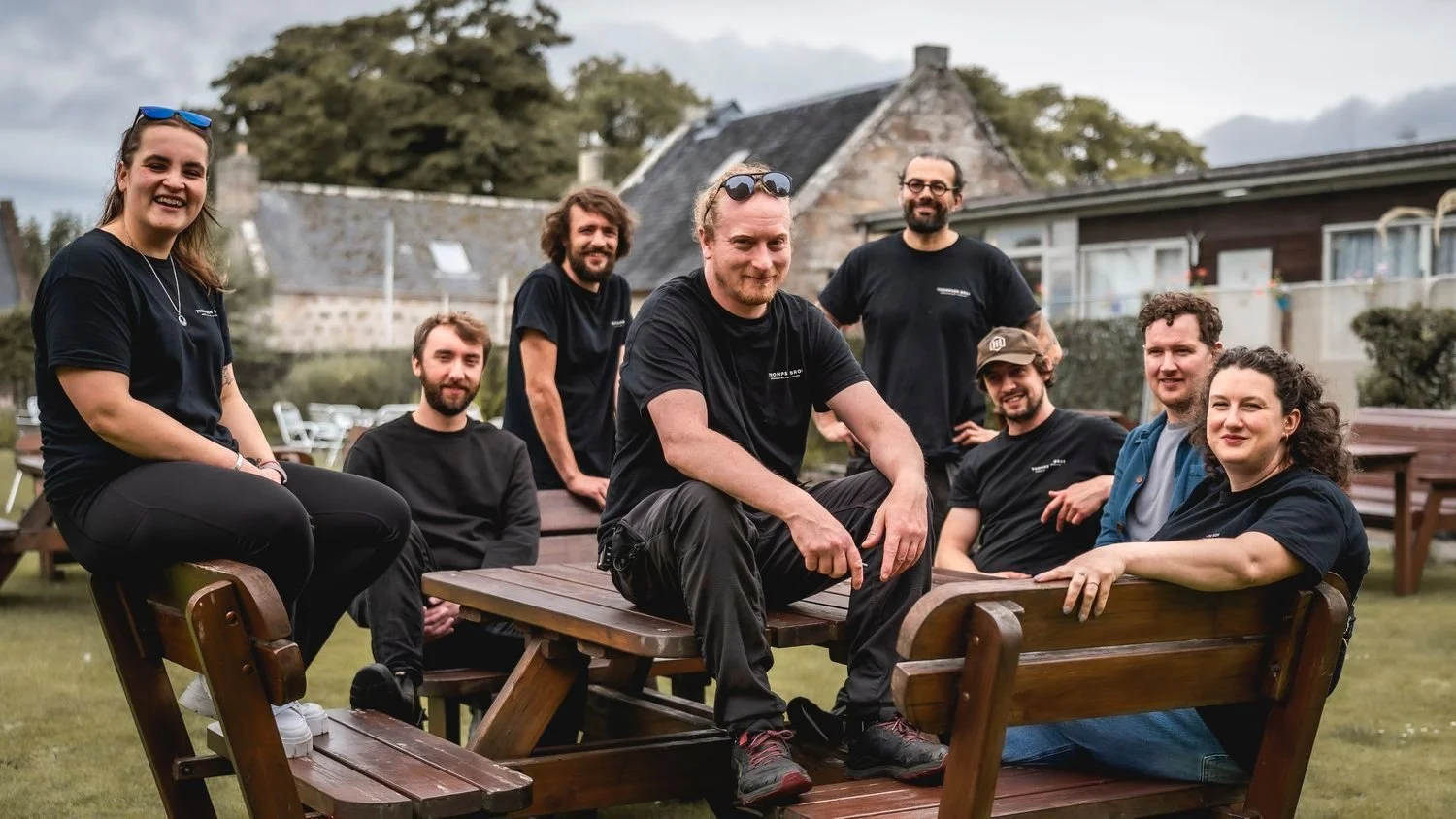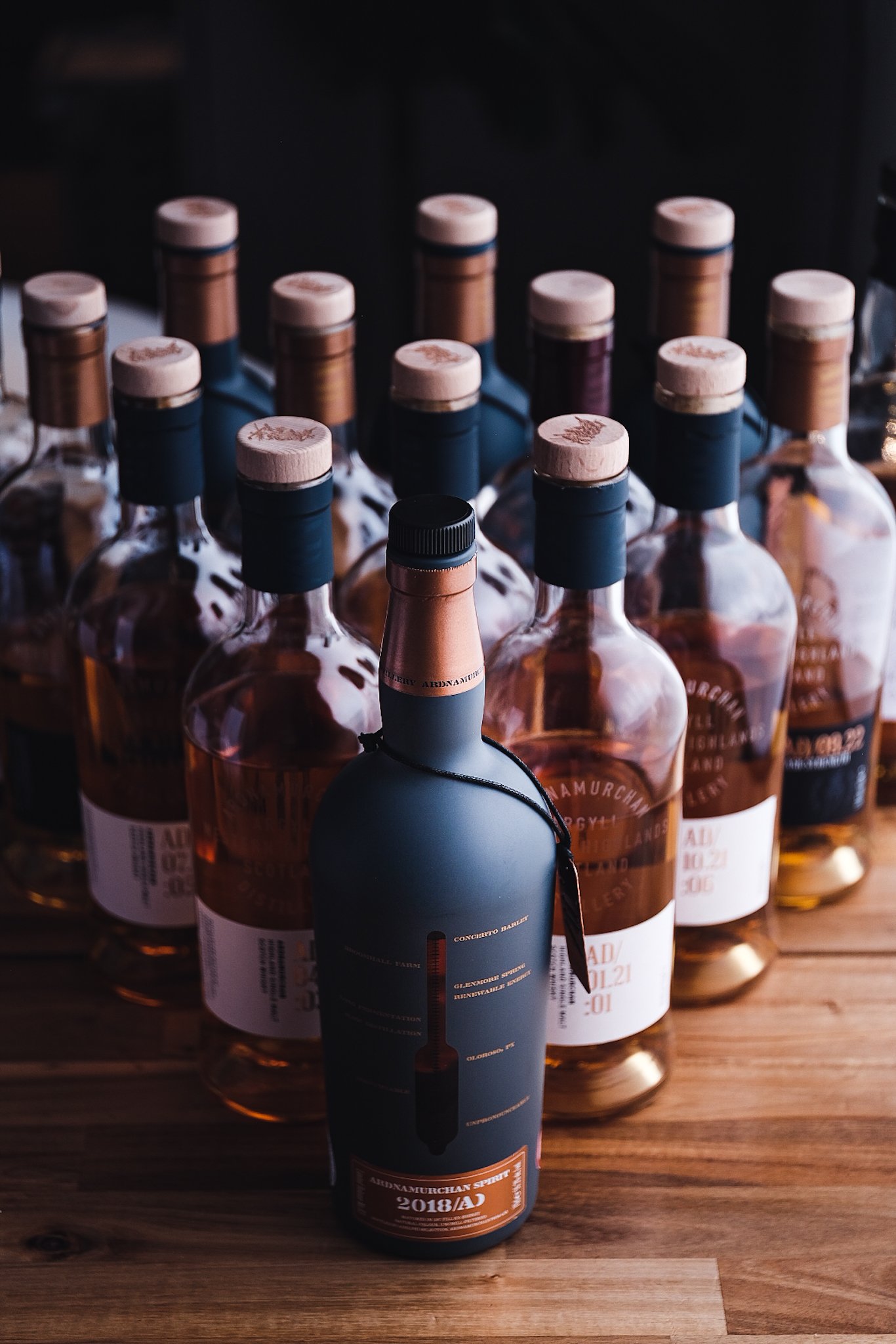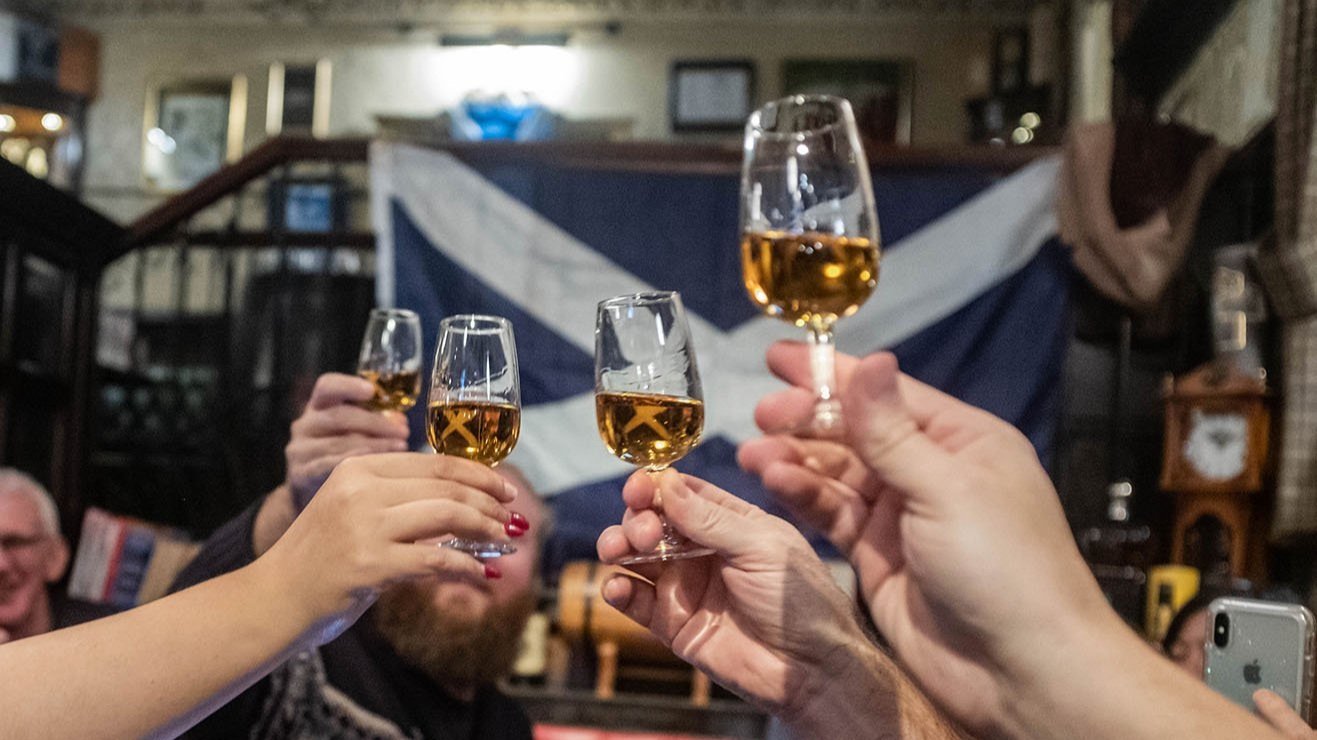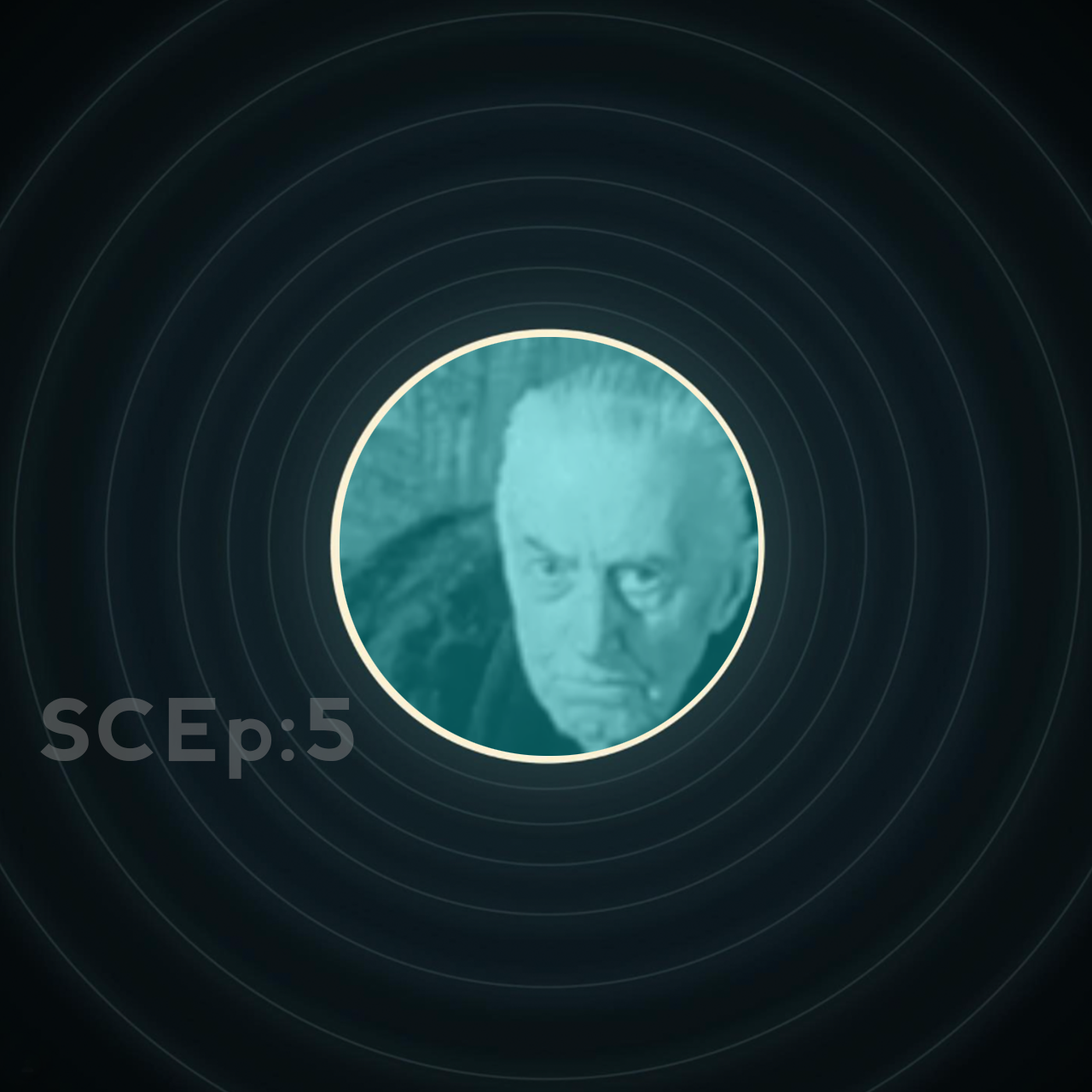Tria Prima Australian Malt Trifecta
New Australian Malts & Interview | 59.2%, 61% & 61.2% ABV
Score: 8/10
Something special.
TL;DR
Simply among the best Australian single malts I’ve tasted
Tria Prima distillery’s Rebis range from the Adelaide Hills
How would you like to retire from your professional career? For Prof. Paul Shand, the answer to that was pretty clear.
Having had a long and rewarding career as a geochemist, when it came time to take his redundancy package from the CSIRO and venture to newer lands, whisky was the natural conclusion. Paul ordered a still from Australia’s premier copper-smiths (Burns Welding and Fabrication) and set to the gargantuan task of building his distillery. Founded in 2018, Paul released his first batches of whisky last year: small batch vattings of bourbon casks (the Shaman releases), apera casks (Enchantress releases) and tawny Port casks (Bruxa releases). The references to alchemical figures and practices are a play on the relation between the transformative processes utilised in making whisky and the goals of alchemy’s proto-chemistry.
Paul hails from the far north of Scotland, specifically a small town called Wick – which might ring a bell for the astute among you Old Pulteney fans. Starting his whisky journey early into his geological career, Paul has spent the intervening time drinking and collecting some absolute gems. There are very few distilleries he hasn’t had the chance to try at some point, and still retains rarities in his collection ranging from Port Ellen to Karuizawa and everything in between. Prior to establishing the distillery, Paul got involved with a couple of other local Adelaide chaps, namely malt maniac Craig Daniels and the gentleman Viano Jaska, to form the 3Souls independent bottling group. The trio have only had a few releases to date, but having tried some of their juice, the quality is self-evident.
So when it came time to design his own whiskies, Paul had an excellent breadth and depth of experience to pull from, both as a consumer and bottler. The background in geochemistry and sciences has undoubtedly given a firm foundation to establish process and methodology, as becomes clear when we will delve into the Q&A below.
Tyree: For our international audience, what is it that typifies the zeitgeist that is Australian whisky compared to other nations’ products?
Paul: For me, the zeitgeist is a bit of a curate’s egg, but I think rich and/or bold would be a general characteristic. The common use of tawny, apera and wine casks, combined with active oak, small casks and a hot dry or humid climate makes Australian whisky a distinct regional style. However, there is a tendency to produce relatively young whiskies which have a strong cask influence. Some of the longer established distilleries have been putting out whiskies with some age now, generally in larger cask formats. The decreasing availability of good tawny and apera casks in Australia will I think see a trend towards more ex-bourbon cask use and potentially a lighter style.
Tyree: What is unique or uncommon about your spirit production?
Paul: Many newly established Aussie distilleries develop a philosophy to aim for a point of difference in their production process. This may include complex mash bills, different yeasts, novel cask types etc. Our philosophy initially was to keep things simple, to get the basics right before experimenting to create different flavours. We also felt that making whisky in the driest state of the driest inhabited continent on the planet would likely give us something different. Our main drivers were to keep the production slow and to focus on top quality casks.
Our process is not unique, but in systems with many variables, the combination of several factors may help our whisky to be unique in some ways. We use predominantly South Australian ale or pilsner malt. We run our ferments au naturel i.e. we don’t chill our fermenters and just let nature do its thing. We run our still very slowly to give us maximum reflux and fractionation, and we have a relatively conservative cut. Our new-make spirit is gentle, clean and estery. Finally, we place a huge emphasis on casks, in both the quality and the variety. Our nano-scale means that consistency is not possible, but we have freedom in variety.
Tyree: What else would you like Tria Prima fans to know about the whisky they’re enjoying?
Paul: Our range of whiskies reflects how different cask types impart flavours to our whisky. Each cask type is represented by a beautiful original artwork painted by local artist and designer Matt Kavanagh. Our vision was driven by the theme of alchemy and a desire to make the branding as interesting as the whisky in the bottle. The story of Tria Prima and the Philosopher's Stone can be found on our webpage.
Tyree: Which projects are you currently working on that have you most excited?
Paul: We have been working with a range of different cask types and sizes. Although we have generally avoided non-fortified wine casks, we do have some ex-Jansz Tasmanian sparkling wine casks. These casks were used in the initial fermentation of the wine, similar to the Champagne method, and are adding some wonderfully unique flavours to the whisky. We have also transitioned up to much larger casks (including Spanish Oloroso, Pedro Ximénez and Aussie Rum), and the balance between spirit and wood is developing beautifully. Each day is exciting trying to understand the maturation process.
We have also just completed a collaboration with some young future distillers using a combination of Australian barley and some heavily peated malt from the UK. The nose on the new-make was incredibly fruity with just a slight hint of peat, but with the peat coming through more on the finish; we can’t wait to see how this evolves in cask.
Finally we are hoping to release our Transfiguration Range soon. This will be a boxed miniature set of cask strength whiskies comprising new make spirit along with samples from the cask as it matured over time, culminating with a Rebis release representing the final maturation: something for the whisky aficionados who want to experience how the whisky matured in cask.
Tyree: What about the Australian industry is working well and what (if anything) could be cause for concern?
Paul: The Australian whisky industry is currently very buoyant and exciting and dominated by relatively small family run distilleries. This has allowed innovation in a number of ways e.g. with grain varieties and cask types. The shortage of tawny and apera casks will likely continue, and many makers are turning to the plethora of Australian wine casks available. We feel that wine casks are currently less well understood and require a bit more skill in how they are treated and used for whisky maturation.
The number of small new distilleries is increasing rapidly and competition is likely to have more of an impact nationally. Whisky is also becoming part of the repertoire of white spirit distillers, and much larger capacity whisky distilleries are already on the horizon. The history of the whisky manufacturing industry is filled with boom and bust periods and there is concern that the boom in distilleries worldwide as well as nationally may have a significant impact. For the drinker, the effect may well be lower prices as efficiencies increase and mergers take place.
Tyree: If you could magically make any one distillery’s spirit profile (other than your own of course), what would it be and why?
Paul: That is just too hard to answer – just one? Please allow me the privilege to select two profiles. As a lover of bold spirits I would select Macallan – but 18yo, from the early 1980’s. These whiskies made me fall in love with single malts and I would love to attain something close to this. The other would be a light and fruity style such as Glen Grant – bourbon cask maturation at its best where quality spirit shines through – the Sauvignon Blanc of the whisky world… And I have about a dozen other ideas, Old Pulteney 21yo included!
Tyree: Other than whisky, what do you drink, and how (if at all) does it affect the whisky you make and drink?
Paul: Having travelled extensively with work in a previous life, I always took the opportunity to try local spirits and drinks. I used to enjoy Scottish real ales in my youth and developed a liking for Belgian Beers. My main drink (apart from whisky), however, is wine, and I particularly enjoy full-bodied reds such as Shiraz, Barolo and Rioja. For spirits, I also like bourbon, increasingly rum, and have a big soft spot for Armagnac and Portuguese brandy. I remember reading that Cognac must be in active wood for only a few months, otherwise you can’t get good age – and if you don’t have good age, you can’t get a great Cognac. It is, in many ways, the same with whisky, and that is driving me to mature my thoughts as well as our whisky as slowly and gently as possible going forwards in this hot climate.
“There are only a handful of other Australian distillers achieving this degree of finesse, with Fleurieu being another. ”
As Paul touched on in the section regarding the production process, the new make spirit is worth special consideration. Firstly, the fermentation bucks a couple of Scottish conventions. Two thirds of the wash being distilled utilises an industry-standard distiller’s yeast. The other third, however, utilises a Belgian ale yeast. The idea behind splitting the yeast used across batches is to mitigate competitive cultures; given mixed yeast cultures in the same fermentation, it is common for the dominant strain with higher metabolic rate and higher stress tolerances to out-compete other strains for resources and dominate the mixed culture. In this instance, given the voracity of most distiller’s yeasts, reduced expression on the part of the Belgian strain would probably result.
Belgian yeasts in brewing have a tendency to be high ester producers, particularly isoamyl acetate (banana ester), as well as high phenol producers. To be clear, we don’t mean smoky phenols, rather the spicy and peppery ones like 4-vinylguaiacol and vanillin from the hydroxycinnamic acid family. These are derived from the decarboxylation of ferulic acid from grains, made possible only by POF+ (phenolic off flavour positive) yeast strains and certain bacteria which have the necessary enzyme. Running fermentations warmer than usual is also a positive regarding ester production, since most ale yeast strains see peak production between about 25-30 degrees centigrade.
Some distillers are wary of letting the fermentations get that warm, both because of foam-over in high fill washbacks and because of increased sulfur production (dihydrogen sulfide, dimethyl sulfide, trimethyl disulfide etc). However, Paul also takes extreme care with his distillation regime: it takes a full day to complete his spirit run, meaning a heart cut in excess of 8 hours. That is some of the gentlest distilling and highest reflux I’ve encountered in the Australian whisky industry! The results speak for themselves, though: the tropical ester profile found in both the new make and mature products is testament to all the transesterification (see my Bowmore festival casks review for an explanation) taking place in the still. The extended reflux also strips out much of the sulfur that might otherwise become problematic in the new make spirit. I have tasted the new make a number of times, and it’s whistle clean.
Perhaps my greatest pleasure in drinking Paul’s whiskies is the cask management. Other Australian palates with a higher predilection for heavily extracted, wet fill and active oak whiskies have indicated that the whiskies need more time. To fans of distillery expression like myself, however, Paul has a knack for pulling whiskies before they become cask dominated and, in my opinion, at excellent stages of spirit and cask synergy. The process is, again just my opinion, enhanced by a resting period in a stainless steel vat – the spirit and oak compounds are allowed further marrying and minor oxidation without excessive extraction. There are only a handful of other Australian distillers achieving this degree of finesse, with Fleurieu being another.
Right, how about a few drams? Now, full disclosure; I consider Paul a good friend and a mentor, and I have spent a reasonable amount of time in his distillery sampling various casks throughout their maturation. That said, it was my idea to put this piece together and I have remained as objective as possible: the whisky is earnestly to my palate’s preference. Alright, disclaimer done – let’s dig in!
Review 1/3
Tria Prima Enchantress (Rebis), 61.2%ABV, 500ml
Single first fill 100L McWilliams apera cask, 2 years 8 months in oak, rested for 2 months in vat
$185AUD, available Australia-wide from the distillery.
Score: 8/10
Something Special.
TL;DR
One of the best ever Australian single casks
Nose
A magic cask. Warm golden syrup on pancakes with raisins, dates, walnuts and a dusting of Chinese five spice. The apera can be felt with a sense of fruit mince in brandy, while underneath the gentle TP esters add a feeling of freshness and structure.
Palate
Similar to the nose, but the esters come to the fore with pineapple and floral stone fruits like peach and apricot. Continues with excellent apera tones of dried fruits, oak spices, roasted nuts and moderate kokumi, whilst the golden syrup morphs into fresh floral honeys.The finish and retronasal bring more peach and orchard fruits while the palate continues with honey, mead, oak spice and more kokumi.
The Dregs
The first time I visited Tria Prima I tasted through more casks than I could keep count of. This was one of them, and from the first time I put my nose in the glass, I was enthralled. The cask continued to shift through several moods and phases with time, but eventually settled into the exquisite state we find it in here. A truly exceptional single cask and one of the best Australian drams I’ve had the pleasure of sampling. Opens nicely with water, the structure staying broadly the same with more emphasis on the nuts and floral honey notes, though my preference is for the cask strength.
Score: 8/10
Review 2/3
Tria Prima Bruxa (Rebis), 58.7%ABV, 500ml
Single first fill 100L Grant-Burge tawny port cask, 3 years 2 months in oak, rested for 6 months in vat
$185AUD, available Australia-wide from the distillery
Score: 7/10
Very good indeed.
TL;DR
A wonderful cask; a rarity in its field
Nose
Decadently desserty. Sticky wine reduction, rosewater baklava, botrytis Gewürztraminer and gentle eucalyptus menthol tones. Time in glass reveals a warm earthiness mingled with polished antique woods and oak spices, plus the typical TP esters peripherally.
Palate
Starts with a good vinous sweet-tart balance before ripe lychee, stewed dark stone fruits and more floral menthols, then a mid-palate shift lifts the oak with pantry spices, old humidor and lactones belying the dram’s age. The finish stretches into a melange of wine and rosewater syrups with some subtle almond rancio and silky tannins fading out, while retronasal echoes the TP esters with suggestions of quince jelly.
The Dregs
Water softens the tannin and spice profiles on the palate while emphasising the aromatic fruits and bringing out a pleasantly volatile sweetness reminiscent of benzene. I found my sweet spot of aroma vs palate experience at around 49%, or a 5:1 dilution. Whilst usually sceptical of tawny cask maturation, the underlying spirit is present enough to not be engulfed by the cask’s previous fill. Paul has done a wonderful job pulling this cask at an age that demonstrates both maturity and deft balance of cask and spirit. This is particularly noticeable in the lack of cloying sweetness and absence of dominant rancio in the finish (commonalities for tawny aged malts). It is still a bit sweeter than most of what I drink by nature of the cask, but the expression of distillery character saves the experience. A rarity in its field.
Score: 7/10
Review 3/3
Tria Prima Shaman (Rebis), 61.0%ABV, 500ml
Single first fill 100L re-coopered bourbon cask, 3 years 5 months in oak, rested for 2 months in vat
$195AUD, available Australia-wide from the distillery.
Score: 8/10
Something special.
TL;DR
Layered and dangerously enjoyable
Nose
Excellent American oak leading the charge: melted butter, split vanilla pod and baking spices with demerara sugar and proper German Strudel crust. The clearest TP esters of the Rebis range: mango sauce, baked pineapple and mild ethyl acetate combine to give an impression of Bajan rum. With time in the glass, some sweet and woody florals emerge.
Palate
Vanilla dosed toffee simmering on the stove, more spices with an emphasis on clove and mild white pepper. Mid-palate, there’s some good biscuity malt while the underpinning TP esters swing back into the fray, this time with more pineapple and some soft banana reinforcing those rum tones. The finish is shamelessly fresh with more tropical fruit driven rums on retronasal, whilst the palate settles in a diminuendo through creamy vanillas, soft pepper and spices.
The Dregs
Whilst water opens the nose brilliantly, allowing us to further delve into the tropical fruit ester profile so idiosyncratic to Tria Prima, the drinkability and mouthfeel at the natural cask strength is dangerous. I would suggest going no lower than about 55%, but personal experimentation should be encouraged. This dram has multitudes to explore, so take your time and find the nuances.
Score: 8/10
Tried these? Share your thoughts in the comments below. TK
-
Dramface is free.
Its fierce independence and community-focused content is funded by that same community. We don’t do ads, sponsorships or paid-for content. If you like what we do you can support us by becoming a Dramface member for the price of a magazine.
However, if you’ve found a particular article valuable, you also have the option to make a direct donation to the writer, here: buy me a dram - you’d make their day. Thank you.
For more on Dramface and our funding read our about page here.
Other opinions on this:
Got a link to a reliable review? Tell us.












































